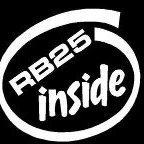R34 rear diff lsd
Announcements
-
Similar Content
-
Latest Posts
-
So, version 4 intake is on its way I was looking at these a while ago but at around $200 or more it was a little pricey for something that might not work, but, I had it in my watch list, but, I got a message saying it was on special, and I had a code thingie to use, it eventually came in at $120 delivered, so BAM, BUY NOW.....LOL I'll need to have a look when it arrives but I feel it will "look" better than what I currently have, as it comes with a PCV fitting, so I will be able to get rid of the alloy pipe that goes to the throttle body with the PCV fitting Well, that's what the voices in my head are telling me Oh, and this happened today Yeap, it was a Trojan, and it was cheap, so I headed back to the hardware store and actually spent a little bit more on a heavy duty, one that was actually recommended by a plumber mate, a Cyclone one with a fibreglass handle that is actually rated for clay The broken shovel will eventually be "modified" into a short handle shovel
-
When you pulled it off, there is no signs of blown head gasket? Is it possible you have some other issues going on? Possible cracked blocked? Or do you think it's straight up lifting the head? Did you check what the head was torqued to before pulling it down (To see if possibly they're stretching, or starting to break threads out etc)?
-
Seems like a decent result for a modded JZX110. They are bulky in comparison to the 100 and 90 models (which I'd prefer myself) but they are getting very few and far between here in JP these days. Thanks for the detailed review and the import process into the UK. I also have a car which I'm hoping to export from Japan at some stage so it's good to know if someone from the UK was interested in it. By the way the corrosion underneath is par for the course for cars which were located in/near the mountains or along the Japan sea coastline. They get huge amounts of snow every winter and the sodium chloride is used on the roads. Many cars have some kind of rubber like treatment underneath but they tend to limit it to the wheel arches underbody and fuel tank. Suspension arms and sub-frames will have similar corrosion to your JZX110 which is a common sight. See it all the time and car dealers here generally don't even mention it unless asked.
-
If the sound goes away when you clutch in, the 1.5/2 way diffs are just shit, and you are a normal person. The diff is likely "fine" but driving at anything under 30kmh is a violent horrible experience. It would be exaggerated with solid diff bushings and subframe bushings if you have those.
-








Recommended Posts
Create an account or sign in to comment
You need to be a member in order to leave a comment
Create an account
Sign up for a new account in our community. It's easy!
Register a new accountSign in
Already have an account? Sign in here.
Sign In Now